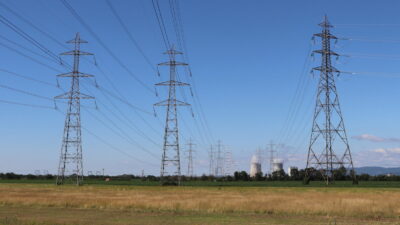Investment promises from politicians—should we believe them?
As the UK general election approaches, voters are being seduced by promises from all the parties about how much they will invest in improving the nation’s infrastructure over the next Parliament. What should we make of these promises? This question is not just about political credibility (or even honesty); it has a hard economic edge. The injection of a slew of new major and minor projects would have implications for the quality of public services, employment, inflation, taxation and government debt. It is worth asking ourselves how much of this spending will actually happen—and when.
This might seem like a cynical question, but recent history shows that investment promises have often proved to be spectacularly optimistic, in terms of both implementation time and cost. In 2016, Prime Minister David Cameron confidently asserted that his government would build much-needed projects. A recent report by the National Audit Office reveals that not one of the 200,000 starter homes promised by his government in 2014 has been built. The first phase of the high-speed railway (HS2)—between London and Birmingham—was originally proposed to open in 2026; now it is scheduled to open between 2028 and 2031. The cost estimate for the overall project has risen from a headline figure of around £62.4bn in 2015 to £88bn in 2019.* The new nuclear power station at Hinkley Point is a similar case. It’s the same story with hospitals: the planned Liverpool University Hospital is now £100m over budget. Of course, some major schemes are delivered on time, but these are few and far between.
The project process
To understand why major projects exhibit these tendencies—and to interpret the current electoral promises—it is necessary to understand how projects and programmes evolve. The main stages of this evolution are described below.
Initiation
Projects are typically announced by governments at a very early stage. The underlying information is normally a broad concept, a crude map, or a cost estimate based on broad benchmarks, with little reference to the specifics of the scheme (which don’t yet exist). This sparse information is often accompanied by a programme that assumes that all milestones can be met without any challenges. At this stage, the projects look very attractive—especially to a politician who is minded to announce the scheme in a blaze of publicity.
Planning
After the project has been announced, the real work begins—turning the concept into detailed, workable and viable plans. Before this there has to be a funding agreement for planning and design work, which may account for several hundred million pounds on a large project.
The time needed for the planning part of the process is often not fully recognised at initiation. To design and price, say, a major rail, road or hospital scheme takes a matter of years, and it involves a series of complex iterations as the full complications emerge. Almost inevitably, initial benchmark-based costs will have to be reset as those complications become clear.
A whole set of technical stakeholders will need to be involved, including government departments, utility providers, highway and rail authorities, and air traffic control services. What’s more, each will have to be satisfied that the detail of the scheme works for them.
As an example, at initiation, the third runway at Heathrow was conceived as being built over the M25, which would be put into a tunnel on its existing alignment. Eight years later, this part of the project has been through several reworkings, and is still unapproved.
Stocktake
At some point in the process, the gap between the original story and the emerging reality may become so wide that it cannot be ignored. At this point, the project goes into review. It may emerge looking somewhat different, with a more realistic set of parameters. This is where HS2 and the third runway at Heathrow currently rest.
Engagement
Very few major projects are uncontroversial, and the major project-planning process requires developers to take their scheme, once designed, and engage and consult with a whole range of individuals and organisations on that detailed design. For this to happen, the developer will have to have completed a suite of environmental assessments.
This part of the process is inevitably made more difficult by the fact that the scheme will have changed from its high-level description at initiation. Fierce opposition can be expected, and court proceedings are not unheard of. Further design changes—as well as efforts to mitigate negative effects on the project environment (such as providing insulation for affected houses or restrictions on construction)—are likely to be conceded during this process, which increases cost.
Formal approval
With the rare exception of schemes that go to Parliament for approval (such as HS2, or the Olympics), once engagement is completed, the plan is submitted to the local authority for planning permission, or to the Planning Inspectorate for a Development Consent Order (DCO). Fortunately, the timeframe for the DCO process is specified, and with a fair wind consent should be issued in less than 18 months.
Pre-contract work
In parallel with this approval process, the developer will have been negotiating with contractors and probably undertaking enabling works. Land may also have been acquired and negotiations undertaken with potential financiers. However, this work cannot be completed until the details of the approved scheme have been signed off through planning approval. In many cases, property owners will have held out until a compulsory purchase order is signed.
Construction
Many words have been written about the costs and risks inherent in the construction phase of these major projects. These are not repeated here—the word ‘Carillion’ is perhaps all that is needed to describe the cost and time overruns that may occur even after work has started. The Liverpool and Birmingham hospitals are cases in point, as is Crossrail.
Commissioning
Finally, when the paint is dry, there is the commissioning period. For a new rail route, airport or nuclear power station, testing is likely to add months to the end date—if everything goes to plan. Normally, everything does not go to plan, and commissioning can take years. Crossrail is at this stage.
Programme effects
In developing a view on the credibility of the package of commitments made by any party, it is important to consider the consequences if all the projects proceed as promised. Prime among these is delivery capacity. The contracting industry will have to find the resources to undertake a number of large and small schemes at the same time. Are there sufficient designers, engineers and builders (taking into account any impacts on the labour market that could follow Brexit)? Does the supply chain have the capacity to respond to the increased level of demand? If it does, has the effect on costs of a short market been considered?
So what should we believe?
The record speaks for itself. However, our comments should not be interpreted wholly negatively; commitments from all political parties to invest in the ‘right’ infrastructure (and provide the funds to do so) are welcome. After all, infrastructure is a fundamental basis for a modern economy. However, these infrastructure projects are large and complex. The planning regime does not function quickly (and rightly so, given the impact that these schemes have on people and communities).
Political commitments to infrastructure are likely to have more impact if they involve a sustained commitment to funding infrastructure development—for example, in line with the funding envelope that the National Infrastructure Commission has been working within.
Promises of many billions of pounds of spending may be an eye-catching (and popular) electoral proposition, but they are unlikely to make a material difference to the serious business of developing and delivering these projects over a longer horizon.
*For comparison, the 2015 figure is shown at 2019 price levels. The 2015 cost estimate at 2015 prices is £55.7bn.
Related

Ofgem RIIO-3 Draft Determinations
On 1 July 2025, Ofgem published its Draft Determinations (DDs) for the RIIO-3 price control for the GB electricity transmission (ET), gas distribution (GD) and gas transmission (GT) sectors for the period 2026 to 2031.1 The DDs set out the envisaged regulatory framework, including the baseline cost allowances,… Read More

Time to get real about hydrogen (and the regulatory tools to do so)
It’s ‘time for a reality check’ on the realistic prospects of progress towards the EU’s ambitious hydrogen goals, according to the European Court of Auditors’ (ECA) evaluation of the EU’s renewable hydrogen strategy.1 The same message is echoed in some recent assessments within member states, for example by… Read More
